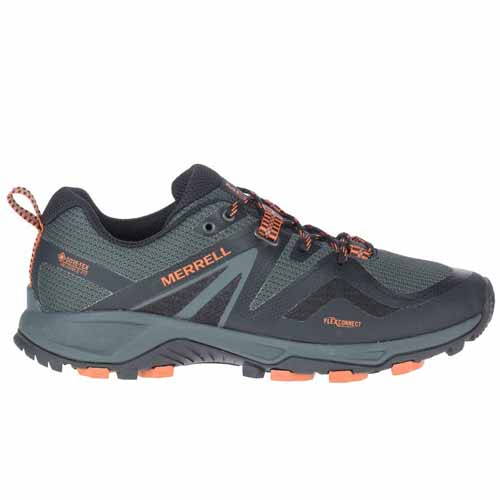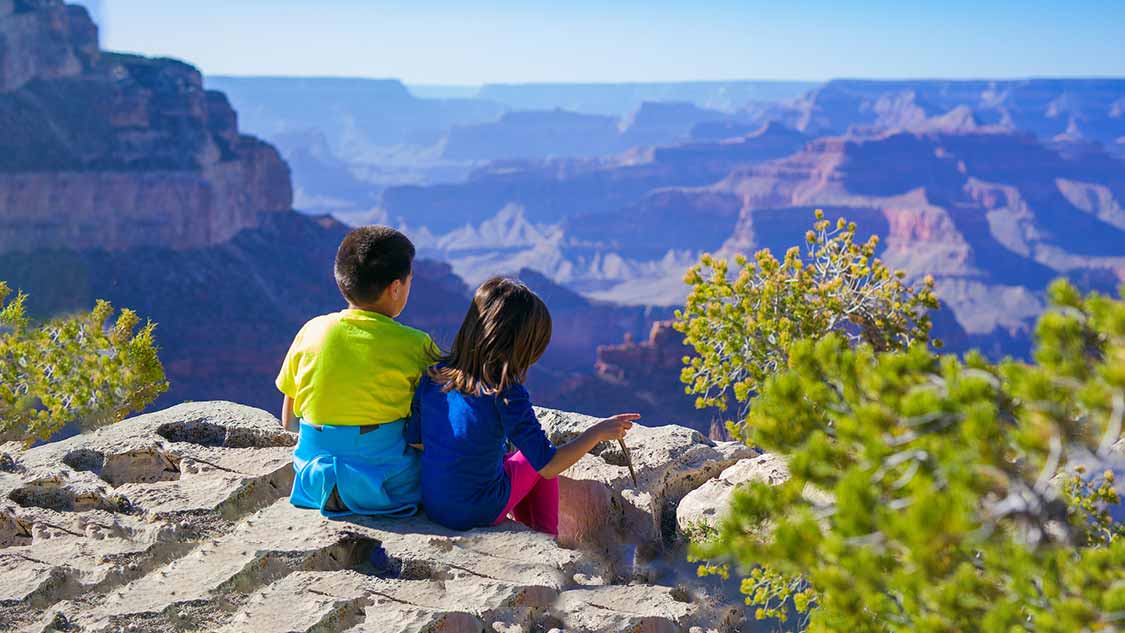From lightweight hikers to rugged men’s hiking boots, this guide to men’s outdoor footwear is perfect for those looking to hit the trail.
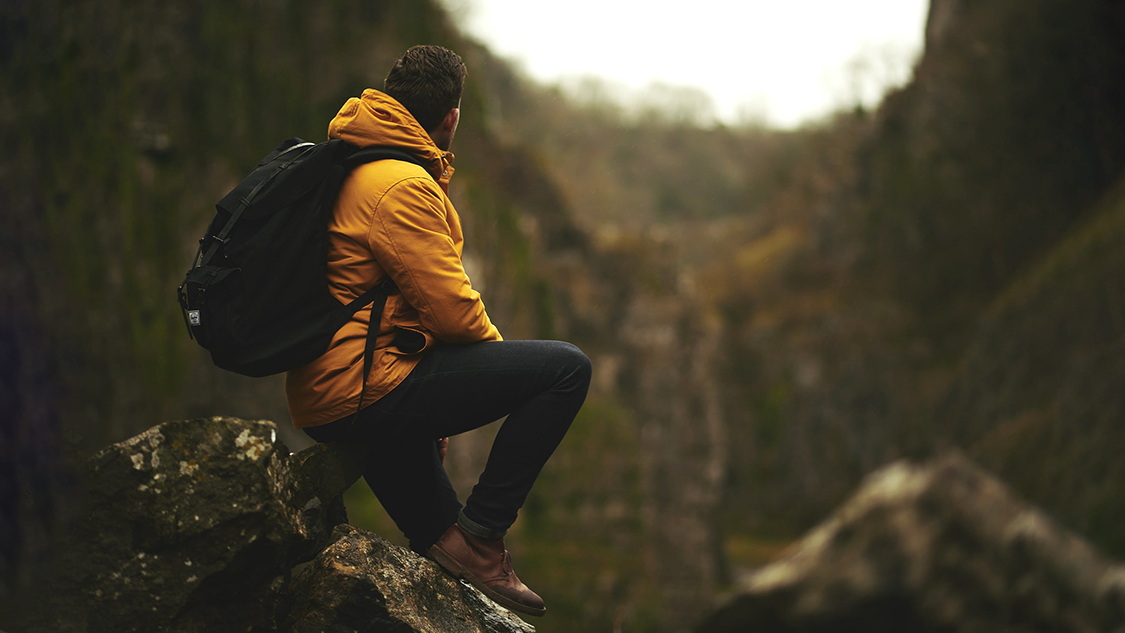
Hiking is in my blood. It’s a primal urge that grabs hold of us in every new place that we visit. My family and I, we don’t just travel to see the sights, we travel to feel the ground beneath our feet, to get dirt under our nails. We’ve hauled our kids up ice-covered volcanoes in Iceland, navigated remote villages in the High Atlas Mountains of Morocco, and stared into the misty abyss of Haleakala Crater on Maui.
And I’ll tell you, there’s no better way to connect with a place than to walk its trails. But let’s be real, the wrong hiking boots can turn a soul-stirring hike into something resembling a death march. Blisters, aching arches, twisted ankles – I’ve seen it all.
That’s why choosing the right men’s hiking boots is crucial. This isn’t about fashion. It’s about function. It’s about finding a boot that can handle the terrain, support your feet, and keep you moving forward, mile after rugged mile.
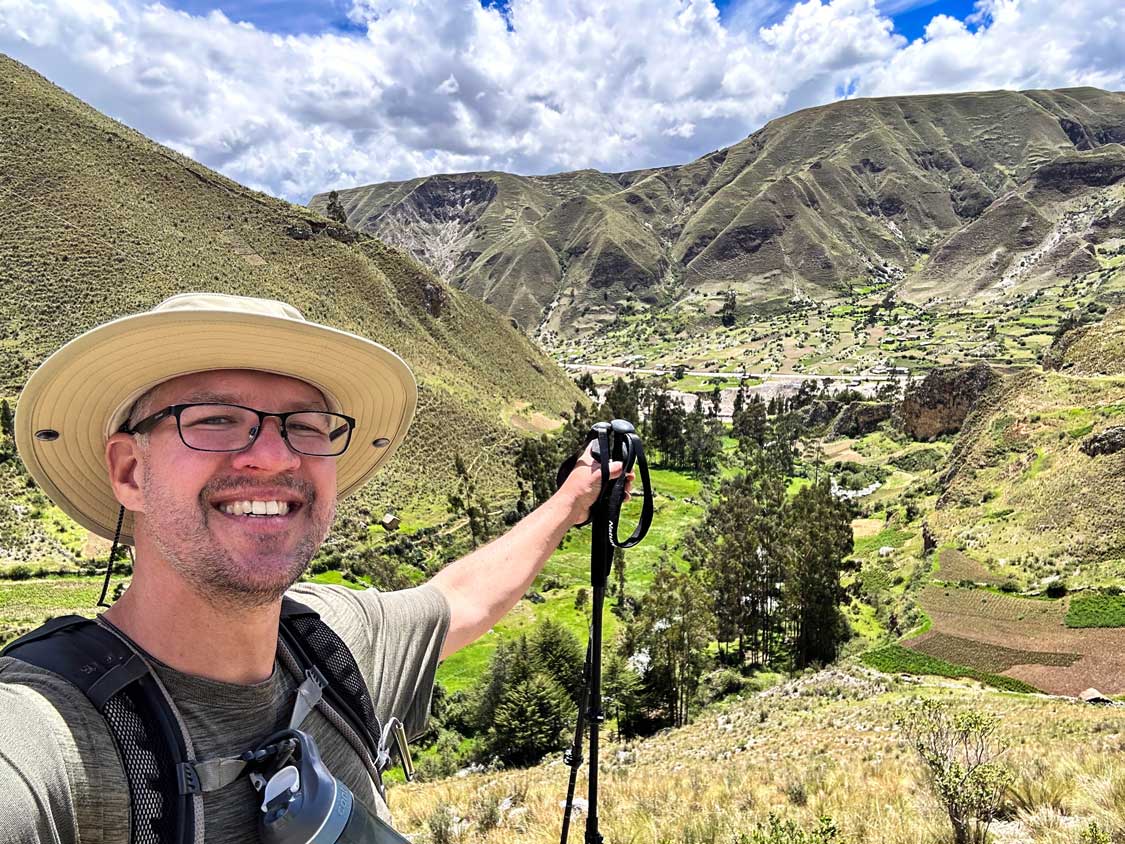
This guide will break down everything you need to know when choosing the best men’s hiking boots – materials, grip, weight, ankle support – the whole nine yards. Because the right boot can mean the difference between conquering that summit and limping back to the trailhead, defeated.
I’ve spent years obsessing over hiking gear, and I’ve put in the miles to back it up. Consider me your trail-worn Sherpa, guiding you through the mire to find the boots that are actually worth their weight in gold.
Further down, I’ll get into the nitty-gritty of what makes a great men’s hiking boot. But if you’re itching to skip the lecture and get straight to the picks, here are our top choices for the best men’s hiking boots on the market.
Our Choices For The Best Hiking Shoes For Men
Table of Contents
| Best High-Ankle Hiking Boot | Best Low-Ankle Hiking Boot | Best Lightweight Hiking Shoe | Best Trail Runners |
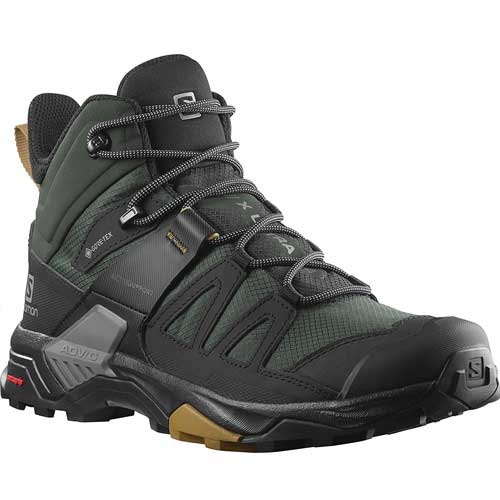 | 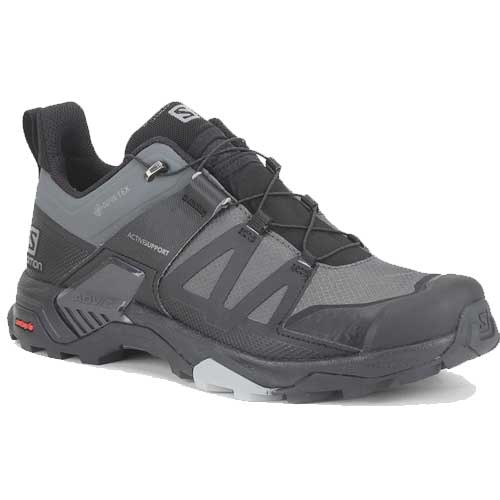 | 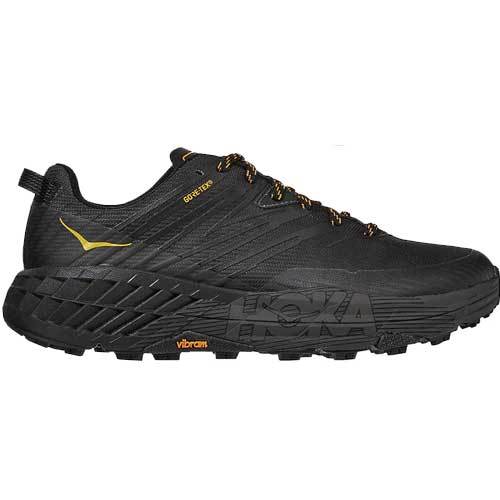 | 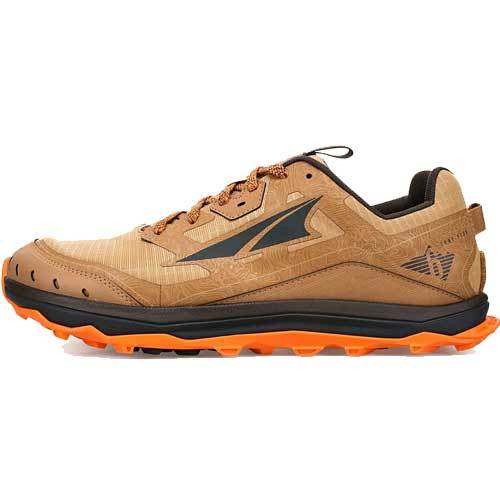 |
| Salomon X Ultra Mid GTX | Salomon X Ultra 4 GTX | Hoka Speedgoat 4 Trail Runners | Altra Lone Peak 8 Trail Runners |
| Waterproof (Gore-Tex) | Waterproof (Gore-Tex) | Waterproof (Futurelight) | Optional |
| 1 lb 14 oz | 13.75 oz | 10.5 oz | 10.6 oz |
| Quick Lace | Lightweight | Packed with technology | Excellent cushioning |
| Loads of Support | Excellent grip | Rockered shape for speed | Flexible design |
 |  |  |  |
What to Look For in the Best Men’s Hiking Boots: Taking Care Of Your Feet

Choosing the right hiking boots isn’t about finding the flashiest pair of shoes on the shelf. It’s about finding hiking boots that’ll treat your feet right, even when you’re miles from nowhere. The wrong boots can ruin your hike faster than a swarm of mosquitoes. The right hiking shoes? They’ll make you feel like you can conquer any trail. Here’s what I look for when separating the contenders from the pretenders:
1. Comfort: Because Your Feet Shouldn’t Be Your Enemy
Comfort on the trail is non-negotiable. I’m not talking about fluffy slippers here, but your feet shouldn’t be screaming in agony after a few miles, either.
- Flexibility: You want a boot that moves with your foot, not against it. Look for materials that flex naturally, especially in the forefoot. Stiff boots belong on a ski slope, not a hiking trail.
- Lightweight Design: Every ounce counts, especially when you’re logging serious miles. Heavy boots will wear you down. I look for lightweight materials that don’t compromise on support or durability.
- Cushioning: Think of your feet as shock absorbers. A well-cushioned insole and midsole will absorb impact and keep your feet happy on rocky, uneven terrain.
- Breathability: Sweat-soaked feet are a blister’s best friend. Look for boots with breathable materials like mesh panels or moisture-wicking linings. Your feet will thank you.
- Proper Fit: This is make-or-break. Make sure there’s enough room in the toe box for your toes to wiggle – about a thumb’s width of space. Your heel should fit snugly to prevent rubbing and blisters.
2. Durability: Built to Take a Beating
Let’s face it, hiking boots take a pounding. You’re kicking rocks, scraping through brush, and exposing them to the elements. You need boots that can handle the abuse and come back for more.
- Tough-as-Nails Materials: Full-grain leather is a classic for a reason – it’s durable as hell when properly cared for. But many modern synthetics are just as tough and often lighter. Look for reinforced stitching and abrasion-resistant fabrics.
- Reinforced Toe and Heel: These are your high-impact zones. A rubber toe cap and a শক্ত heel counter will protect your feet and extend the life of your boots.
- Bombproof Construction: The boot should feel solid and well-made, not flimsy. Check for secure seams and a robust connection between the upper and the sole.
- Water Resistance/Waterproofing: Wet feet are a hiker’s worst nightmare. Depending on where you hike, you might need water-resistant or fully waterproof boots. Look for a Gore-Tex lining or a similar waterproof membrane.
3. Grip: Stay on Your Feet, Not on Your Ass
You want to be looking at the scenery, not worrying about slipping and sliding on the trail. Good traction is essential for staying upright, especially on loose gravel, wet rocks, or muddy slopes.
- Deep, Multi-Directional Lugs: Think of these as the teeth of your boots. Deep, well-spaced lugs with a multi-directional pattern will bite into the terrain and provide grip on uneven surfaces.
- High-Traction Rubber: The type of rubber used in the outsole is crucial. Look for sticky rubber compounds that provide solid grip, even on wet surfaces. Vibram is a well-known and respected brand for outsoles.
4. Support: Keeping You Stable and Injury-Free
Proper support is about more than just comfort. It’s about protecting your ankles, knees, and feet from injury, especially when you’re carrying a pack or navigating challenging terrain.
- Ankle Support: Do you need a low-cut, mid-cut, or high-cut boot? Low-cut shoes offer more flexibility, while mid-cut boots provide more ankle support for uneven terrain. High-cut boots offer maximum ankle support and protection but can feel more restrictive. It depends on your hiking style and the terrain you’ll be tackling.
- Arch Support: Good arch support helps distribute your weight evenly and reduces strain on your feet. Look for boots with contoured footbeds or consider adding aftermarket insoles for customized support.
- Solid Heel Counter: A firm heel counter locks your heel in place, preventing it from slipping and reducing the risk of blisters or ankle rolls.
Now that you know what I look for, here are our top picks for men’s hiking boots that deliver on all fronts:
The Best Mid-Ankle Hiking Boot For Men
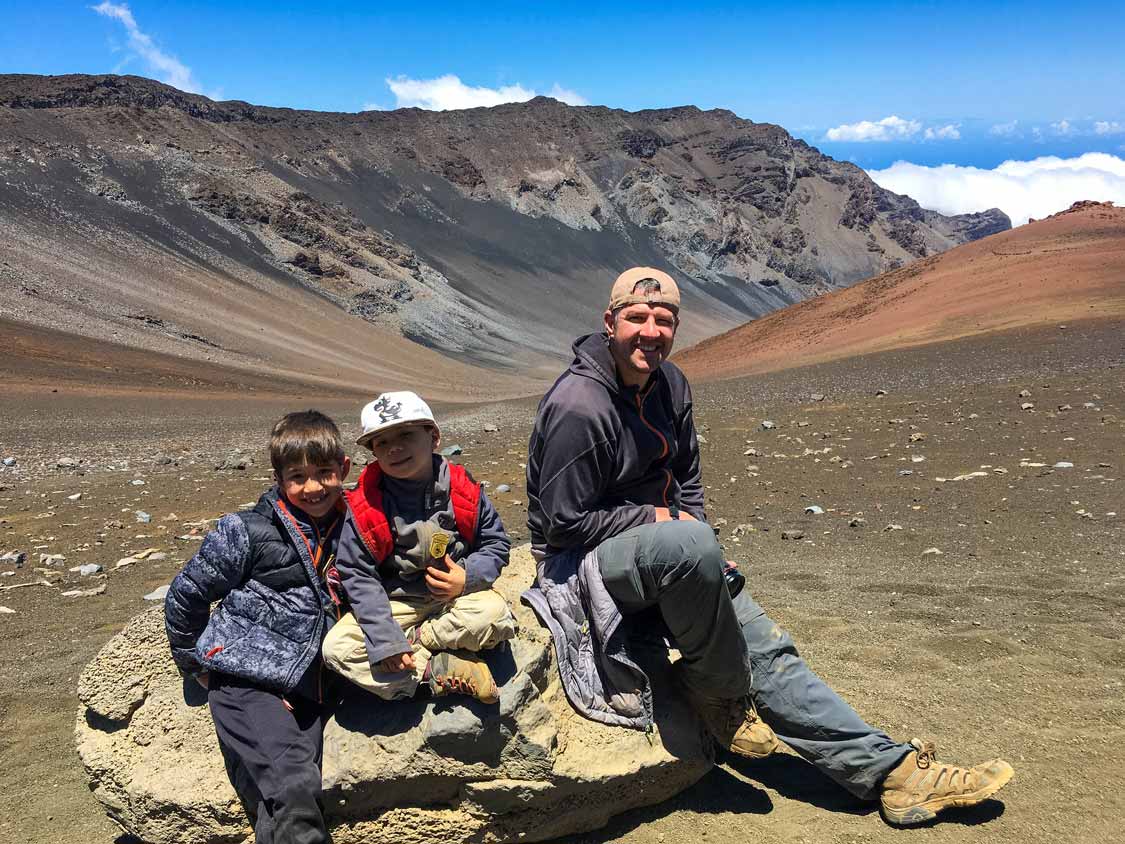
Men’s mid-ankle hiking boots offer a convenient midpoint between the sturdy and stiff features of high-ankle boots and the lightweight comfort of a low-ankle shoe or trail runner. But, it does this without sacrificing all of the ankle support.
If you’re looking for a sturdy pair of all-purpose hiking shoes that can be used across multiple terrains and environments, the mid-ankle design is for you. We find them to be the most versatile hiking boots for most hikers.
Top Choice – Salomon X Ultra 4 Mid GTX

Salomon has consistently built some of the most exciting and reliable men’s hiking boots on the market. And their latest iteration of the X Ultra-series takes everything they have done and brings it up another notch.
The X Ultra 4 is lighter, more durable, and has better water resistance than past models. Yet, it still holds on to the incredible support points and comfortable insole that we’ve loved about past models in this series.
The Salomon X Ultra 4 offers the weight and comfort of a trail runner with the support and grip of a mid-ankle hiking boot. In fact, I’d go so far as to say that it’s more on par with a running shoe than it is with a traditional men’s hiker.
That lightweight and comfort doesn’t sacrifice other important hiking boot features such as traction and waterproofing, though. It’s truly one of the best all-around men’s hiking boots on the market.
If you require excellent ankle protection or a stiff sole, you might want to consider something in a high-ankle boot. But if you have been wearing low or mid-ankle hiking boots in the past and are looking to move up in quality, this model should be on your list.
Budget Option – Merrell Moab 3 Mid-Hiking Boots
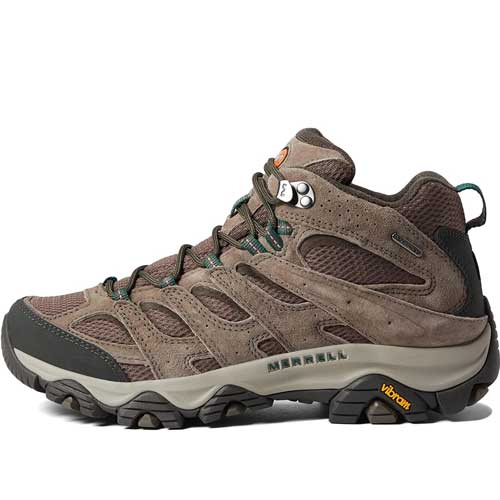
I have been a huge fan of Merrell hiking boots for as long as I can remember. Perhaps it’s the fact that they come in both regular and wide-foot designs so that they can fit a large array of men’s feet. Or, perhaps it’s the fact that they’ve never let me down through countless hikes in Iceland and around the world.
These boots are incredibly tough, comfortable, and breathable. They come in both a lightweight, breathable design as well as a Gore-Tex waterproof model, which is excellent if you’re caught in the rain or find yourself in any low-water crossing.
Most of the time, Merrel Moabs are what you’ll find on my family’s feet. That’s because they are excellent hiking boots that come in at a fraction of the cost of many of the higher-end boots.
Are they the best? No. But they are the best for the money. By far.
The Best Low-Ankle Hiking Boot For Men
Low-ankle hiking shoes are fantastic for those looking for a lightweight, flexible and comfortable hiking boot who don’t need the extra support of a mid or high-ankle boot.
These are the go-to hiking shoes for guys who enjoy trail walking, day hiking, and exploring well-trodden trails where the chance of encountering uneven terrain is less likely. Consider a mid or high-ankle boot if you’re thinking you might be doing some scrambling or hiking among rocks, carrying a heavy load, or other strenuous hiking.
Top Choice – Salomon X Ultra 3 GTX

Like their mid-ankle hiking shoe design, the Salomon Ultra X 3 is our winner for men’s best low-ankle hiking shoe. If money were no option, the Salomon model would be on my feet almost every day. They are sturdy and waterproof and offer some of the best traction under nearly every circumstance.
At 1 lb 10.8 oz for the pair, the Salomon Ultra X 4 is lightweight and versatile with a comfortable insole that offers a stiff base for rough and slippery surfaces.
The one downside of the Salomon models is that they run warm. This is due to the waterproof design, which limits breathability. If you are someone, such as myself, who prefers a cooler shoe, you might want to consider one that skips the Gore-Tex.
Budget Option – Merrell Moab 3 Low Hiking Shoe
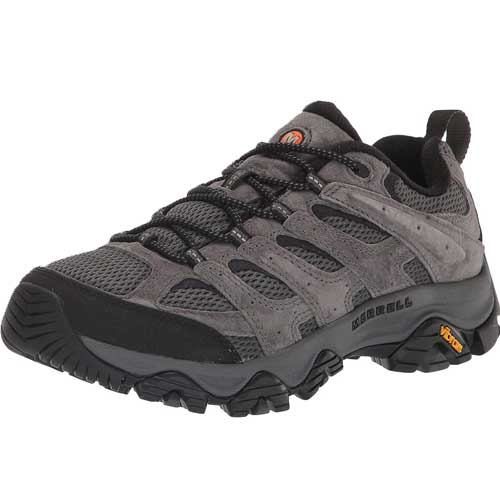
Once again, Merrell steps up and offers all of those without $200 to spend on a hiking shoe the chance to get into the game. These budget-friendly men’s hiking shoes come in both wide and regular styles to fit most men’s feet. They are comfortable right out of the box and don’t require much work to break them in.
For those looking for a bit more breathability, the Moab low-rise hiker comes in both a waterproof and non-waterproof options. Personally, I opt for the waterproof as I’m constantly chasing my kids into the water. But it’s nice to have that vented option.
These hiking shoes come in at about 1 lb 15 oz, which is slightly heavier than the Salomon Ultra X 3. And they are also a good deal less expensive.
Best Lightweight Hiking Shoe For Men
So you love hiking, but you don’t like classic women’s hiking shoe styles. I get it. These lightweight women’s hikers fit somewhere between the classic running shoe, the trail runner, and the low-cut boot making for one of the most lightweight, comfortable, and versatile hikers for those who like to explore gentle trails.
Lightweight hiking shoes tend to be lighter than boots, more durable than trail runners, and generally more stylish for those who might also like to wear them for urban exploring.
The designs tend to focus on lightweight mesh tops that help with breathability but contain a leather sidewall that offers improved support and firmness.
Top Choice – Hoka Speedgoat 5

The Hoka Speedgoat 5 Trail Runners are brand new to our list of the best hiking boots for men in 2023. These men’s hiking shoes definitely won’t make the “budget” category, but if you’re looking for ultra-lightweight hiking shoes that can hold up to a lot of wear, these should be on your list.
This hiking shoe offers grippy, cushioned soles that work fabulously on technical trails. As the name suggests, these provide a goat-like traction on even the trickiest of surfaces. They use the Vibram® Megagrip with Traction Lug that I have on my Vibram Five Fingers, which I use for running.
The extended heel helps hikers slip these shoes on and off very easily, and the shoes are made entirely of recycled material, so they’re an excellent eco-conscious choice as well.
At just 10.5 oz per shoe, these are among the lightest waterproof hiking shoes on the market.
Budget Option – Merrell MQM Flex 2
The Merrell MQM Flex sits in sharp contrast to its rugged sibling, the Moab 2. This men’s lightweight hiker is fast and flexible and works like a beefed-up trail runner. It’s also offered in both mid and low-ankle designs for those who might prefer the extra ankle support.
At 1 lb 9 oz, this nimble hiking shoe is light, but it still offers decent toe and heel protection as well as a solid rock plate along the sole. The aggressive sole does a fantastic job of gripping just about every surface, even under wet conditions, although we wish that the sole was more durable.
True to the Merrell brand, the MQM Flex offers excellent value for the money and is excellent for those looking to save a few dollars. It also comes in both a Gore-Tex waterproof and a more breathable non-waterproof design.
Best Trail Runners For Men
I LOVE trail runners. They are light, comfortable, and a great option for hikers who love to tackle trails with speed or fitness in mind.
Because trail runners are so lightweight, they are also popular with thru-hikers and cross-country runners. They tend to offer better hiking support and grip than running shoes but little to no ankle support.
These aren’t a great option for those who carry a heavy backpack or a baby carrier for hiking. That’s because the lack of lateral support makes ankle sprains much more common. But, if you’re hiking some long trails with just a light pack and a lot of energy, women’s trail runners will serve you very well.
Top Choice – Altra Lone Peak 8

Altra Lone Peaks have been a staple for thru-hikers on the Pacific Coast Trail and the Appalachian Trail for quite a while now. Their wide-toe shoe design is friendly for those who spend long hours on the trail and need room for the inevitable swelling that comes from a lot of time on your feet.
The Altra Lone Peak 8 design is ingenious and greatly improves on its predecessor. Although it’s not waterproof (the design is more focused on breathability), it does have gaiter tabs that do an excellent job of keeping dirt and stones from entering your shoe while on the trail.
At 10.6 oz per shoe these are among the lightest hiking shoes on the market.
Waterproof Option – Tecnica Magma
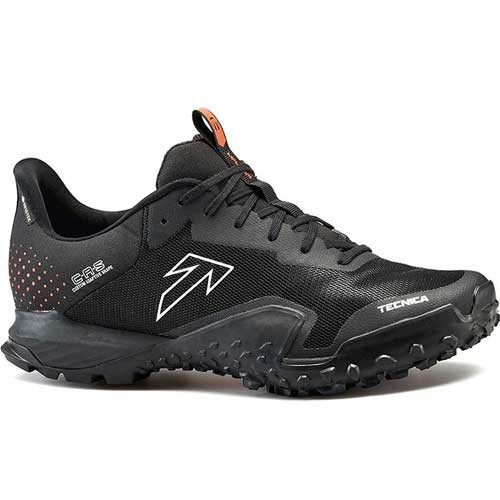
The Magma 5 by Tecnica is designed with the avid hiker and trail runner in mind. At 1 lb 6 oz, they are the lightest men’s hiking shoes on this list, but that weight comes at a price as they also lack some of the cushioning of other models such as the Altra Lone Peak 5.
The hybrid design is incredibly capable, and the brilliant lug-style sole offers excellent grip and traction in every condition that we threw at it. The Tecnica Magma comes in both non-waterproof and Gore-Tex waterproof options and offers a nice combination of stiffness and flexibility for hiking and trail running.
The downside of the aggressive sole means that the Magma is not as comfortable or practical on firmer terrain such as concrete or urban environments. It’s definitely designed for scrambling and off-the-beaten-path trails.
It’s Time To Hit The Trails With Your New Men’s Hiking Boots
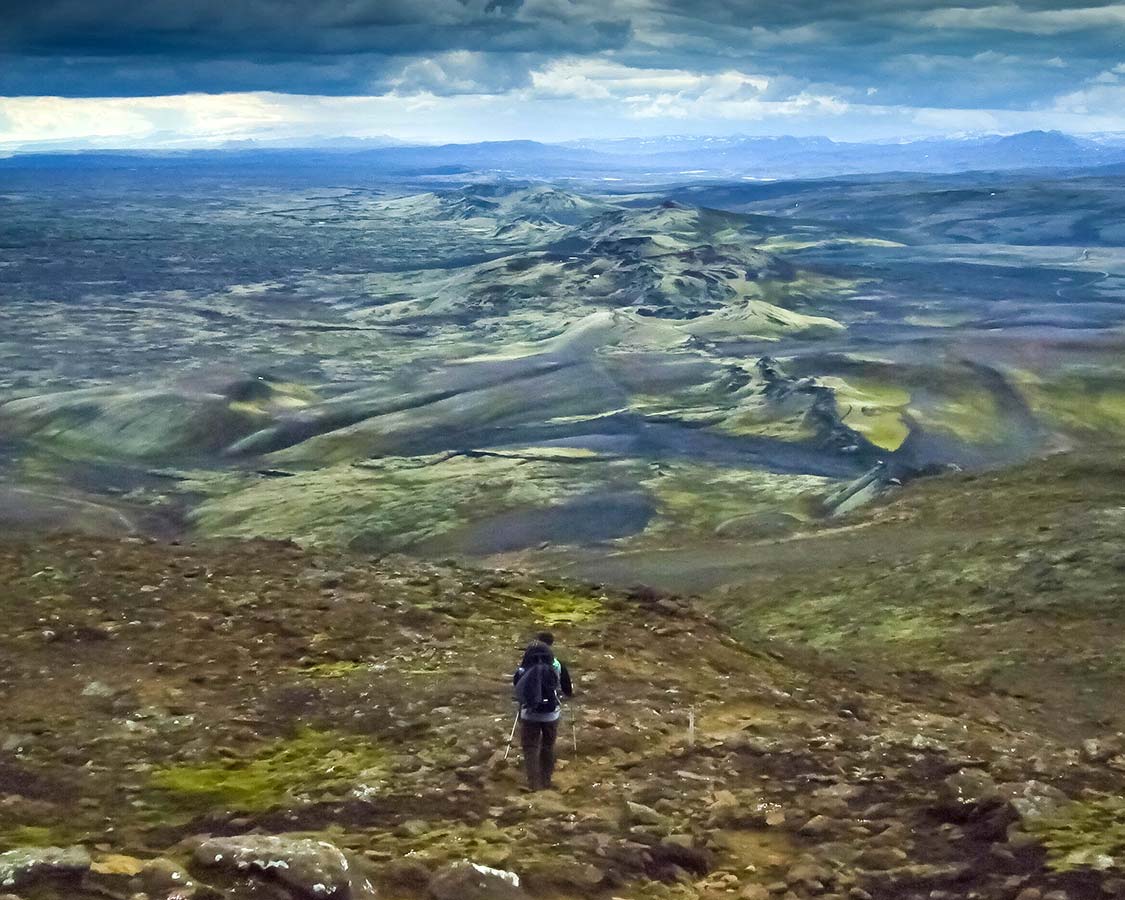
Whether your hiking style includes adventurous trails like the Cup and Saucer Trail on Manitoulin Island, Ontario, or short, scenic routes like the Garden of the Gods in Colorado Springs, these men’s hiking shoes will help you enjoy the outdoors comfortably.
Enjoy your time on the trails. Please remember to leave no trace. And don’t hesitate to share your experiences in our Family Travel Support Group on Facebook.
This post may contain compensated links. Find more info on our disclaimer. Wandering Wagars is a participant in the Amazon Services LLC Associates Program, an affiliate advertising program designed to provide a means for sites to earn advertising fees by advertising and linking to amazon.com, amazon.co.uk, amazon.ca. Amazon and the Amazon logo are trademarks of Amazon.com, Inc. or its affiliates.
You May Also Like To Read:


